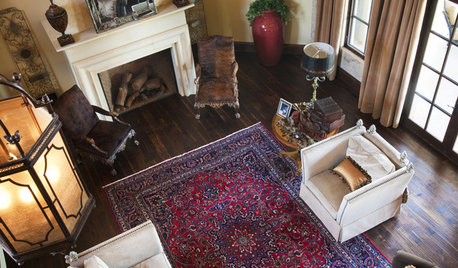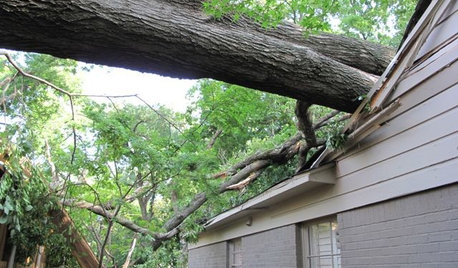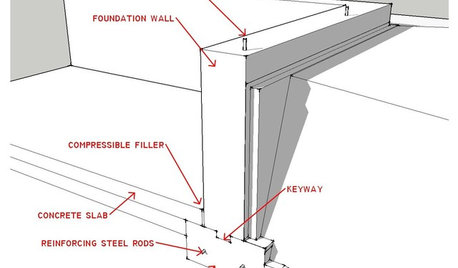Using compost to help prevent foundation damage
dogwind
13 years ago
Related Stories

WINDOW TREATMENTSA Surefire Way to Prevent Sun Damage Indoors
Why let light ruin your furniture, floors and artwork, when the solution could be as simple as applying high-quality window film?
Full Story
RUGSPrevent Slips and Floor Damage With the Right Rug Pad
Here's what to know about sizes, materials, costs and maintenance of this important companion to your area rugs
Full Story
HOUSEKEEPINGProtect Your House From Winter Water Damage
Avoid costly repairs by learning to spot potential problem areas before water damage is done
Full Story
REMODELING GUIDES5 Remodeling Monkey Wrenches and How to Prevent Them
Avoid delays and cost overruns by planning certain parts of a home remodel extra carefully. We show you which ones and how
Full Story
DISASTER PREP & RECOVERYRemodeling After Water Damage: Tips From a Homeowner Who Did It
Learn the crucial steps and coping mechanisms that can help when flooding strikes your home
Full Story
BATHROOM DESIGNWater Damage Spawns a Space-Saving Bathroom Remodel
A game of inches saved this small New York City bathroom from becoming too cramped and limited
Full Story
HOUZZ TOURSMy Houzz: Twister Damage Sparks a Whole Ranch Remodel
A Dallas couple transforms their traditional rambler into a bright, family-centered haven after a tornado
Full Story
ARCHITECTUREKnow Your House: What Makes Up a Home's Foundation
Learn the components of a common foundation and their purpose to ensure a strong and stable house for years to come
Full Story
GARDENING GUIDESGet on a Composting Kick (Hello, Free Fertilizer!)
Quit shelling out for pricey substitutes that aren’t even as good. Here’s how to give your soil the best while lightening your trash load
Full Story
WORKING WITH PROS3 Reasons You Might Want a Designer's Help
See how a designer can turn your decorating and remodeling visions into reality, and how to collaborate best for a positive experience
Full StoryMore Discussions






jean001
sandhill_farms
Related Professionals
Clark Landscape Architects & Landscape Designers · West Chester Landscape Architects & Landscape Designers · Wakefield Landscape Contractors · Del Aire Landscape Contractors · Fair Oaks Landscape Contractors · Forest Hills Landscape Contractors · La Vista Landscape Contractors · Lakeville Landscape Contractors · Salem Landscape Contractors · Jupiter Decks, Patios & Outdoor Enclosures · Larkspur Decks, Patios & Outdoor Enclosures · Mastic Decks, Patios & Outdoor Enclosures · New Albany Decks, Patios & Outdoor Enclosures · Port Saint Lucie Decks, Patios & Outdoor Enclosures · Royal Oak Decks, Patios & Outdoor Enclosuresgardenlen
lazy_gardens
bob64
gjcore
cowgirl2
dogwindOriginal Author
Lloyd
tracydr
cowgirl2
CaptTurbo
tracydr
novascapes
jean001a
Kimmsr
novascapes
toxcrusadr
kqcrna
Kimmsr
toxcrusadr
Kimmsr
toxcrusadr